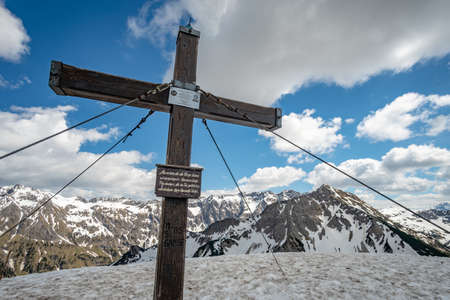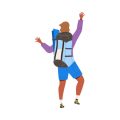1. Understanding Emergency Signaling Basics
When you’re deep in the American backcountry—whether exploring the Rockies, trekking in the Sierras, or hiking in remote areas of Appalachia—getting lost or facing an emergency can happen to anyone. In these situations, knowing how to signal for rescue quickly and effectively is a crucial survival skill for every outdoor adventurer.
Why Signaling Matters
Rescue teams rely heavily on visual and audible cues to locate people in distress. In vast wilderness areas where cell service is often unreliable or nonexistent, your ability to get noticed can make all the difference. Effective signaling helps search and rescue (SAR) teams find you faster, reducing the risks associated with prolonged exposure to the elements.
Key Principles of Emergency Signaling
To maximize your chances of getting found, keep these principles in mind:
- Visibility: Your signal should stand out against the natural landscape. Use bright colors, reflective materials, or movement.
- Contrast: Signals that contrast with their surroundings are easier to spot—for example, using a white cloth on dark soil or an orange vest in green forests.
- Repetition: Consistent, repeated signals attract more attention than one-off attempts. Patterns like three short blasts or flashes are recognized as distress signals in North America.
- Location: Choose open spaces like clearings or ridgelines so your signal can be seen from afar and by aircraft if needed.
- Day & Night Approaches: Use different tools and methods for signaling during daylight versus nighttime hours to ensure maximum effectiveness.
Common Emergency Signals Recognized in the U.S.
| Signal Type | Description | Best Used |
|---|---|---|
| Three Blasts/Flashes | Three whistle blasts, mirror flashes, or light signals; universal distress call | Day & Night |
| SOS Pattern (···—···) | Morse code for “SOS,” done with sound, light, or writing | Mainly Night/Low Visibility |
| Ground-to-Air Symbols | Large X or V shapes made with rocks, logs, or gear visible from above | Daytime/Aerial Search |
| Bright Clothing/Gear Display | Laying out high-contrast items on the ground or hanging them up high | Daytime/Open Areas |
| Fire/Smoke Signals | Campsite fires with added green vegetation for smoke columns | Dawn/Dusk/Night/Cloudy Days |
The Bottom Line for American Adventurers
No matter where your next adventure takes you—from national parks to backcountry trails—understanding these emergency signaling basics can save your life. The right knowledge and preparation ensure that if you ever need help, you’ll know exactly how to get noticed fast and increase your chances of a safe rescue.
2. Traditional Tools: Whistles, Mirrors, and Fire
When you’re hiking in the wilds of America, having traditional signaling tools can make a world of difference in an emergency. Let’s break down how to use some classic gear—signal whistles, mirrors, and emergency fires—to help rescuers spot you fast.
Signal Whistles
A signal whistle is a lightweight, reliable tool every hiker should carry. The high-pitched sound travels farther than shouting and won’t tire you out. If you need help:
- Use the universal distress signal: Three short blasts (each about one second long), pause, then repeat after a minute.
- Blow firmly: Take deep breaths and blow with strong, steady force for maximum volume.
- Keep it handy: Attach the whistle to your backpack strap or around your neck so you can reach it quickly if needed.
Safety Tip
Avoid blowing your whistle constantly; save your energy and make each signal count. Listen between signals for any response from rescuers.
Signal Mirrors
Signal mirrors use sunlight to flash a bright reflection over long distances—sometimes up to 10 miles on a clear day! Even if you can’t see people or aircraft, they might spot your flashes.
- Aim carefully: Hold the mirror near your eye and use the sighting hole (if available) to aim at your target—such as a helicopter or distant search party.
- Sweep slowly: Move the mirror back and forth across the horizon or toward the sound of engines or voices to catch attention.
- Practice before you go: Signal mirrors take a little getting used to, so try them out before hitting the trail.
| Tool | Main Use | Best Practice |
|---|---|---|
| Whistle | Loud audio signal | Three short blasts, repeat every minute |
| Mirror | Visible daytime signal | Aim flashes toward rescuers or aircraft |
| Fire | Visible smoke/flame signal | Create three fires in a triangle or line if possible |
Emergency Fires
An emergency fire isn’t just for warmth—it’s also an effective visual signal. In the U.S., three fires in a straight line or triangle is a recognized distress sign. Here’s how to do it safely:
- Select a safe spot: Clear an area of brush and debris before building any fire. Avoid starting fires during dry or windy conditions that could spark a wildfire.
- Add green branches: Once flames are going, toss green branches or wet leaves on top to produce thick white smoke that’s easier to spot from afar.
- Keep it controlled: Never leave your fire unattended. Put it out completely when not in use by soaking with water and stirring ashes until cool.
Caution!
Always follow local fire regulations and check for burn bans before setting any signal fire. Safety comes first—for you and for the forest!

3. Modern Technology: PLBs, Satellite Messengers, and Smartphones
Getting lost or hurt in the American backcountry is a real concern, but modern technology can be a true lifesaver. Today, hikers and outdoor lovers have access to high-tech signaling devices that make it much easier to call for help—even far from cell service. Let’s break down the most popular options and how they fit into U.S. wilderness adventures.
Personal Locator Beacons (PLBs)
PLBs are compact devices designed for emergency use only. When activated, they send a distress signal with your GPS location directly to search-and-rescue satellites. This info is then relayed to local rescue agencies who know exactly where you are. PLBs don’t require a subscription and work almost anywhere on earth—no cell coverage needed. They’re rugged and reliable, making them a favorite among U.S. backpackers and solo travelers.
Key Features of PLBs
| Feature | Description |
|---|---|
| Activation | Manual, one-button press (for emergencies only) |
| Subscription Required? | No |
| Battery Life | Typically 5+ years standby; single-use battery |
| Covers US Wilderness? | Yes—works anywhere with sky view |
Satellite Communicators (Garmin inReach, SPOT)
If you want two-way messaging along with SOS capability, satellite communicators like Garmin inReach or SPOT devices are great choices. These gadgets connect to global satellite networks and let you send custom texts or preset check-in messages, plus trigger an SOS if needed. Most models require a monthly subscription, but offer more flexibility than PLBs—they let you update family or share your trip progress while still providing direct access to rescue services anywhere in the U.S.
Popular Satellite Communicators Comparison
| Device | SOS Function | Two-Way Messaging? | Subscription Needed? | Main Benefit for US Use |
|---|---|---|---|---|
| Garmin inReach Mini | Yes | Yes | Yes (monthly/annual plans) | Compact; reliable nationwide coverage; texting ability |
| SPOT X | Yes | Yes (on device) | Yes (plans vary) | User-friendly; built-in keyboard; widely used by US hikers |
| Acr Bivy Stick | Yes | Yes (via app) | Yes (flexible plans) | Easily pairs with smartphone; affordable for casual users |
Smartphone Emergency Features in the Backcountry
Your smartphone can also help—even off-grid! Many newer iPhones and Androids have built-in emergency SOS functions that can text your GPS location to emergency contacts or 911 when connected to a network. Some phones now support satellite messaging (like iPhone 14/15’s Emergency SOS via satellite), which is perfect if you’re hiking in remote American national parks or forests where there’s no cell signal at all. It’s smart to always keep your phone charged and know how these features work before heading out.
Quick Comparison: Rescue Technology Options for American Hikers
| Tool Type | Main Strength | Main Limitation | Suits US Backcountry? |
|---|---|---|---|
| PLB | No subscription, best for life-or-death emergencies | No messaging/cannot cancel false alarm | Excellent |
| Satellite Messenger | SOS + two-way communication, trip tracking | Monthly fee; needs open sky | Excellent |
| Smartphone SOS/Satellite | You already own it; user-friendly interface | SOS by satellite not on all phones; battery drains fast | Good—if compatible model & features enabled |
The right tech could mean the difference between waiting days for rescue—or getting found fast. If you love exploring America’s wild places, packing one of these tools is just as important as bringing water or layers.
4. Visual and Audible Signals: SOS Patterns and Improvised Techniques
Standardized SOS Signals in the U.S.
When you find yourself in a remote area and need to get rescued, signaling correctly can make all the difference. In the United States, there are several recognized SOS signals that search and rescue teams look for. The most universal is the SOS distress signal—three short, three long, three short—whether it’s with light, sound, or other means. Here’s how you can use different tools to send clear signals:
Light-Based Signals
- Flashlights & Headlamps: Use them at night or during low visibility. Flash the SOS pattern (… — …) toward open areas.
- Mirrors or Reflective Surfaces: During daylight, use a mirror or any shiny object to catch sunlight and flash in the direction of potential rescuers or aircraft.
- Chemical Light Sticks: Snap and wave them after dark to create attention-grabbing movement.
Sound-Based Signals
- Whistles: Blow three short blasts (pause, repeat), which is an accepted distress signal across North America. It carries farther than shouting and saves your voice.
- Horn or Air Horn: Great for louder, longer-range alerts if you have one packed.
Ground-to-Air Signals
If aircraft are searching for you, ground-to-air signals are essential. Use rocks, branches, clothing, or anything that contrasts with your surroundings to form large symbols on open ground. The following table shows common signals used in the U.S.:
| Signal | Meaning | Description |
|---|---|---|
| V | Need Assistance | Create a large “V” shape with materials; visible from the air |
| X | Need Immediate Help | A large “X” indicates urgent help required |
| SOS | Distress Call | The letters “SOS” spelled out using rocks, logs, or gear; internationally recognized as a distress call |
| Arrow (→) | Direction of Travel | An arrow points toward your intended path if you must move from your location |
Improvised and Creative Techniques
- Bright Clothing: Lay out jackets or gear to increase visibility.
- Smoke: If safe to do so, start a smoky fire during daylight hours—green branches or leaves work best for thick smoke.
- Tarp or Blanket: Spread out a brightly colored tarp or emergency blanket in an open area.
- Makeshift Flags: Tie bandanas or strips of fabric to branches and wave them when you see rescuers nearby.
- Noisemakers: Bang metal objects together periodically if whistles aren’t available.
SOS Pattern Quick Reference
- Morse Code for SOS:
- Three short flashes/beeps/taps (· · ·)
- Three long flashes/beeps/taps (– – –)
- Three short flashes/beeps/taps (· · ·)
TIPS FOR EFFECTIVE SIGNALING:
- Select open areas where signals won’t be blocked by trees or terrain.
- Create contrast—use materials that stand out against your environment.
- If you hear planes or see search parties, increase your efforts immediately!
- Pace yourself—conserve energy but keep signaling regularly until help arrives.
If you remember these basic visual and audible signaling methods—and improvise with whatever you have—you’ll greatly increase your chances of being found quickly in remote areas.
5. Coordinating with Search and Rescue Teams
What to Expect After You Signal for Help
Once you have used your signaling tools—like a whistle, mirror, or satellite device—and help is on the way, it’s important to know what happens next. In the United States, search and rescue (SAR) teams are usually made up of local volunteers, firefighters, sheriff’s deputies, and sometimes trained dogs or helicopters. Their main goal is to find you quickly and keep everyone safe.
Effective Communication with SAR Responders
Clear communication can make rescue efforts faster and safer for everyone involved. Here are some tips to interact effectively with American SAR teams:
| Communication Tip | How It Helps |
|---|---|
| Stay Calm & Visible | Makes it easier for rescuers to locate and approach you safely. |
| Follow Instructions | SAR teams may give you directions by voice, radio, or signal. Listen carefully and do as they ask. |
| Answer Questions Clearly | Be ready to provide information about your health, location, and any other people with you. |
| Avoid Unnecessary Movement | Unless directed, stay put so rescuers don’t have to search a wider area. |
| Use Simple Language | If English isn’t your first language, use basic words and gestures. Most American SAR members are patient and understanding. |
Cultural Aspects of SAR Operations in the U.S.
SAR operations in the United States focus on teamwork, safety, and respect. American SAR responders are generally friendly but professional. Here are some things you might notice:
- No Payment Expected: Most rescues by public agencies are free of charge in the U.S., though some areas may bill for helicopter use.
- Respect for Privacy: Rescuers won’t ask unnecessary personal questions; their priority is your safety.
- Diversity: Teams often include men and women from different backgrounds.
- Punctuality: Americans value timeliness—when given an estimated arrival time or instruction, try to be ready.
- Emergency Protocols: Follow all instructions about staying put or moving; these decisions are based on years of experience in wilderness rescue.
If You Have Special Needs or Concerns
If you have allergies, medical conditions, or need translation assistance, let the SAR team know as soon as possible. They will do their best to accommodate you—your well-being is their top priority.
Quick Checklist: What to Do When Found by SAR Teams
- Identify yourself clearly
- Mention any injuries or urgent needs right away
- Thank the rescuers—they’re there to help!
- Follow all instructions until you are safely out of the area
This approach will help ensure a smooth and safe rescue experience if you ever need help in the American wilderness.


